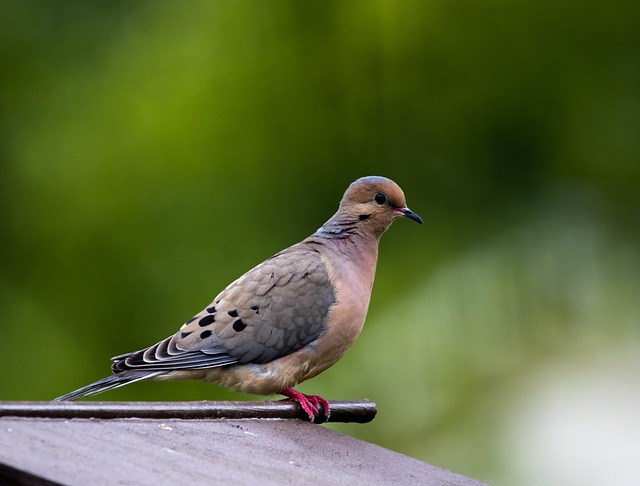
The Mourning Dove(Zenaida macroura) is Known for its soft and somber cooing song and graceful appearance. The Mourning Dove is a captivating bird found throughout much of North America. This bird holds special significance in various cultures and ecosystems. The Mourning Dove is classified in the avian order Columbiformes, and family Columbidae.
While Mourning Dove is the typical common name for this bird, it is also sometimes known as the American Mourning Dove, the Rain Dove, the Chueybird, Carolina Pigeon, or Carolina Turtledove. The Mourning Dove has also simply been referred to as the Turtle Dove, however it is important to not confused the Mourning Dove with the Turtle Doves that are classified in the genus Nesoenas, or genus Streptopelia.
Physical Characteristics
Adult Mourning Doves are 29 centimeters(11 inches) on average and the average body weight is 132 grams(5 ounces), the average wingspan is 42 centimeters(1’5″); they have long, pointed tails, which is unique among North American doves; their are black spots on the wings; the legs and feet are reddish.
| Genus | Zenaida |
| Species | Z. macroura |
| Binomial Name | Zenaida macroura |
| Length | Length 23-34 cm(9″-13″) |
| weight | 86-170 g(3-6 oz) |
| Wingspan | 37-45 cm(1’3″-1’6″) |
| IUCN Status | Least concern |
Range And Habitat
Mourning Doves can be seen primarily in North America(particularly prevalent in the continental United States.), but can also be seen in Central and South America. Sightings in Greenland, and the United Kingdom have also been recorded. Mourning Doves inhabit open woodlands, farmlands, and backyards.
Breeding
A Mourning Dove’s nest is typically made of pine needles, twigs, and grass stems, and is placed on a tree branch. A Mourning Dove mother lays 1-2 eggs per clutch. The eggs are white and without any markings. Both the mother and father share the duty of incubating the eggs for a fourteen day period.
Diet
Mourning Doves eat seeds, grains, and berries.
Lifespan
The Mourning Dove can live for up to 30 years.
Conclusion
In conclusion, the Mourning Dove is more than just a common bird in North America; it is a symbol of grace, tranquility, and connection to nature. Its soothing calls and graceful appearance make it a beloved presence in parks, gardens, and landscapes across North America. Whether observed in flight, perched on a fence, or heard cooing in the distance, the Mourning Dove serves as a reminder of the beauty and serenity found in the natural world. As we continue to appreciate and protect our environment, let us not forget the significance of these gentle birds that bring comfort and hope to our lives.
